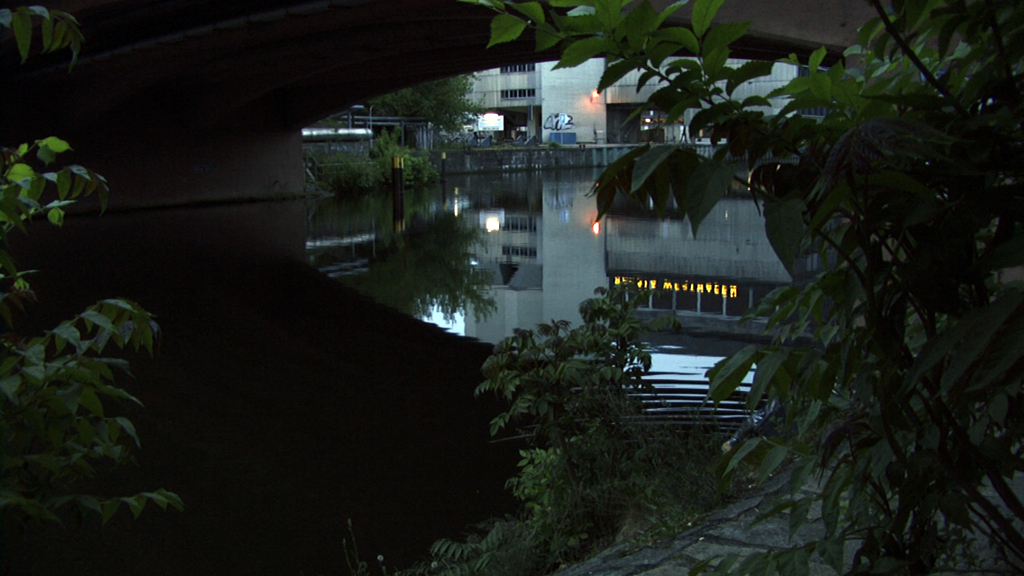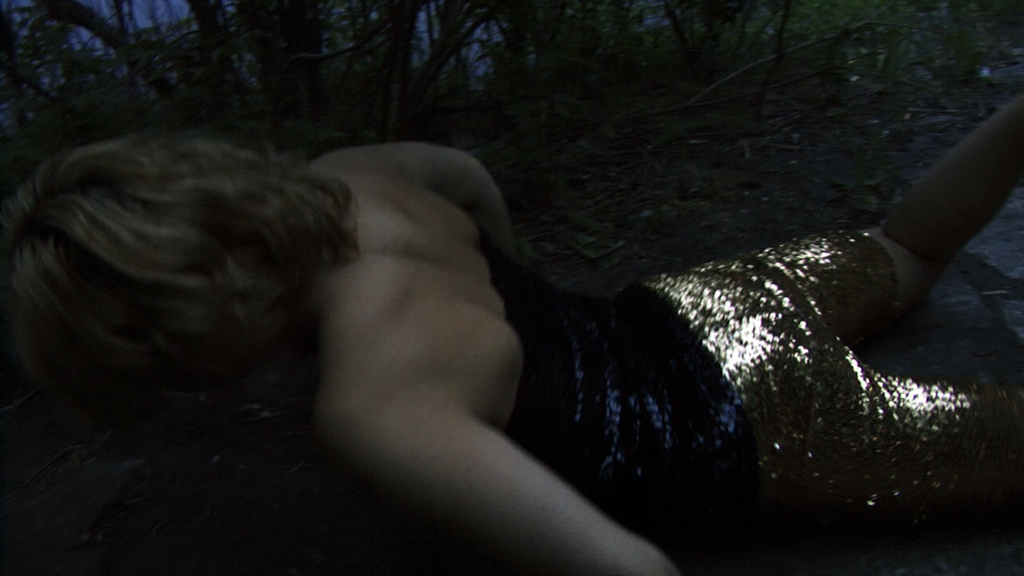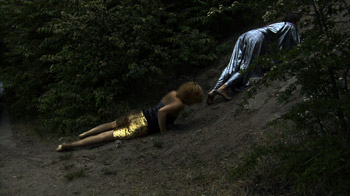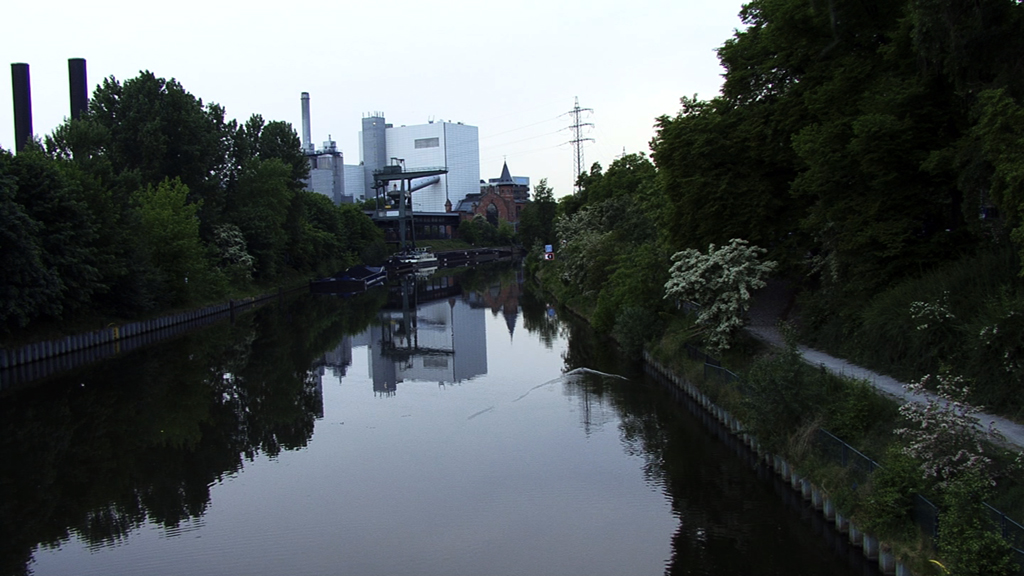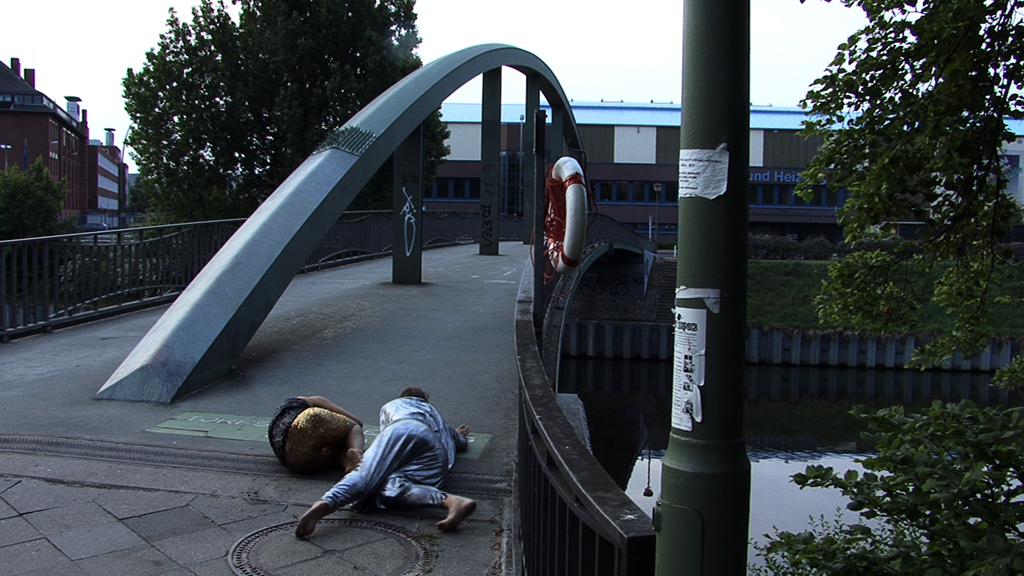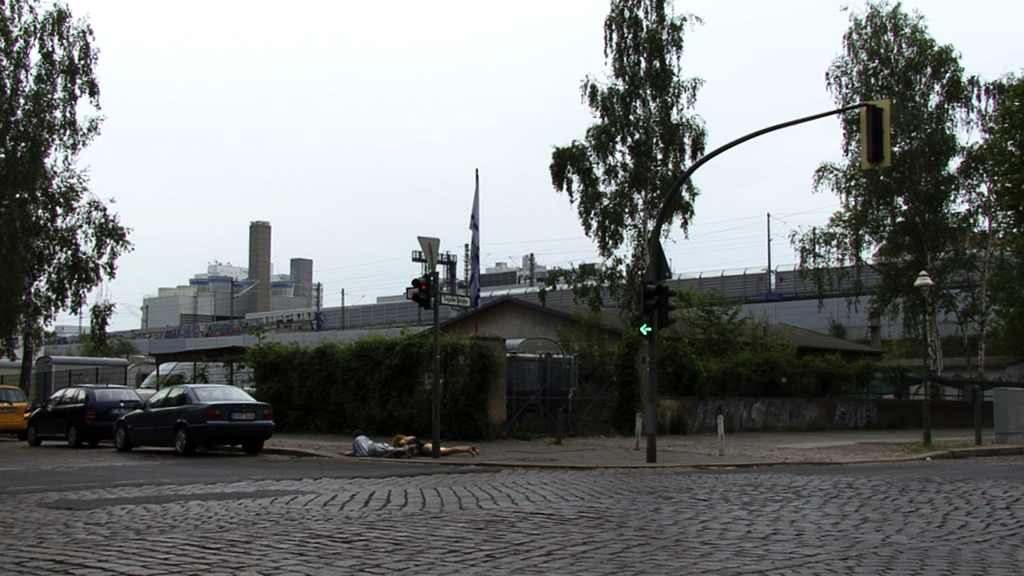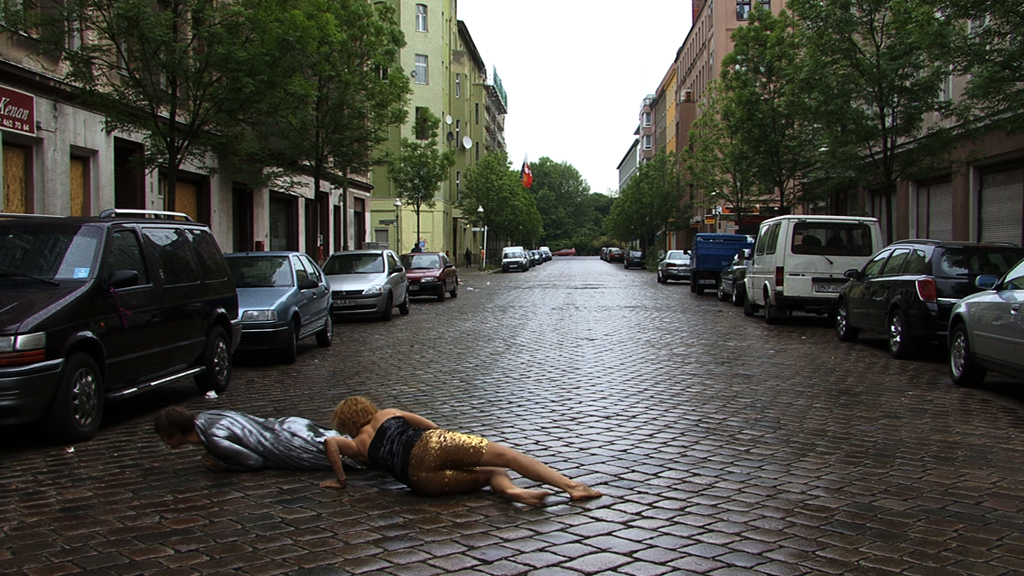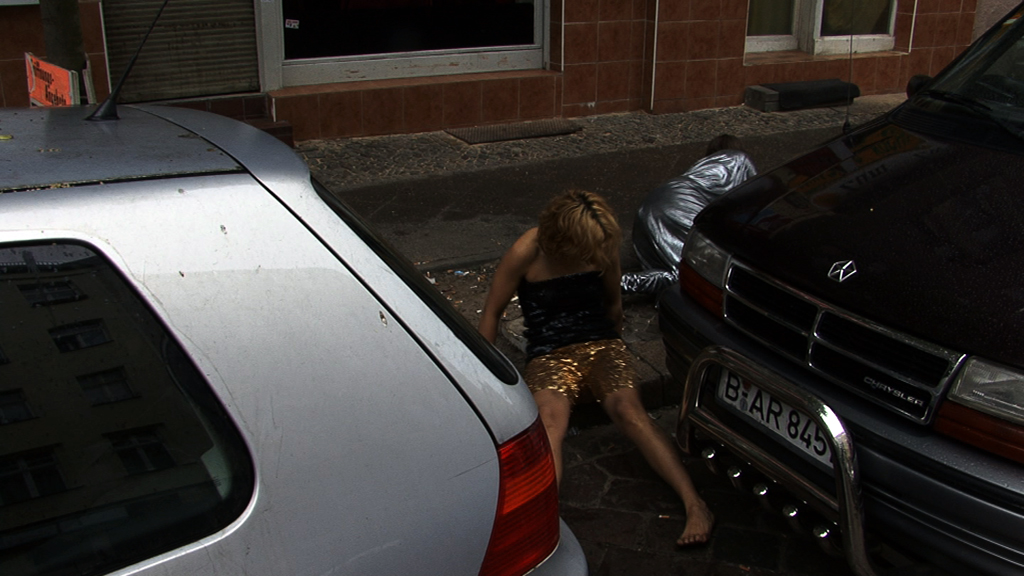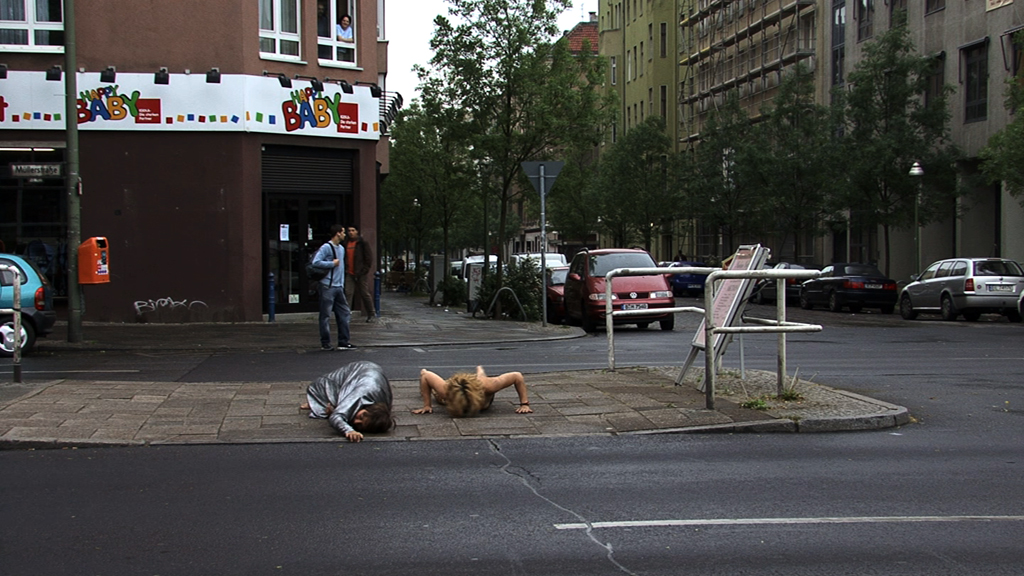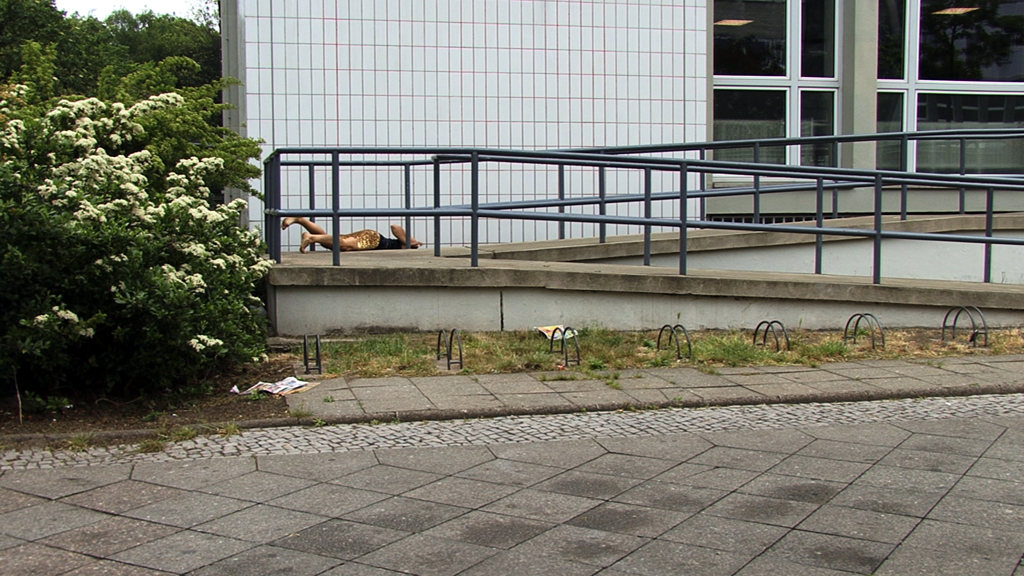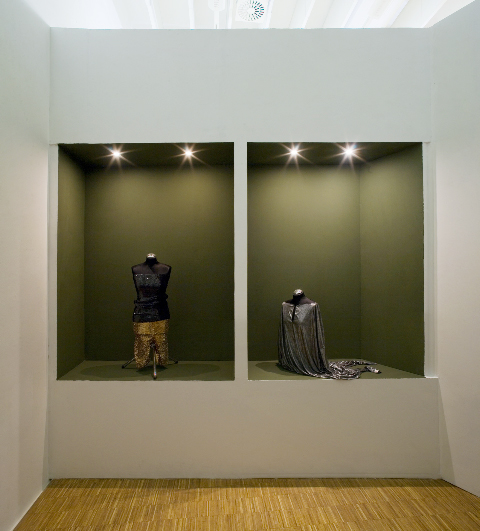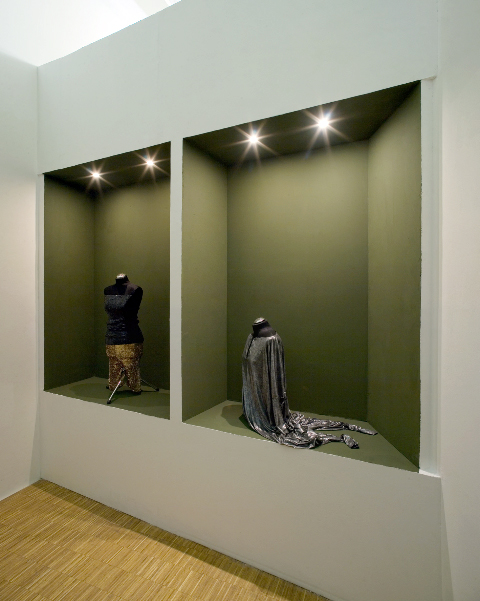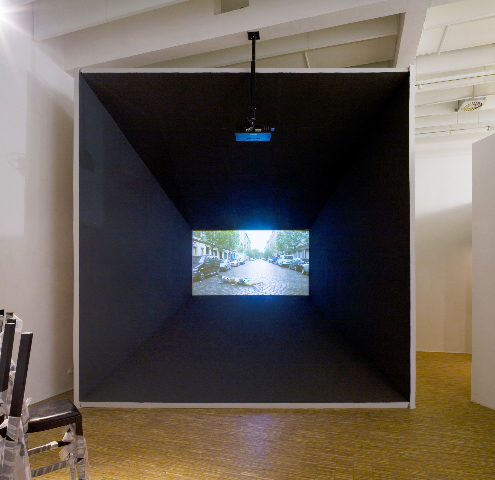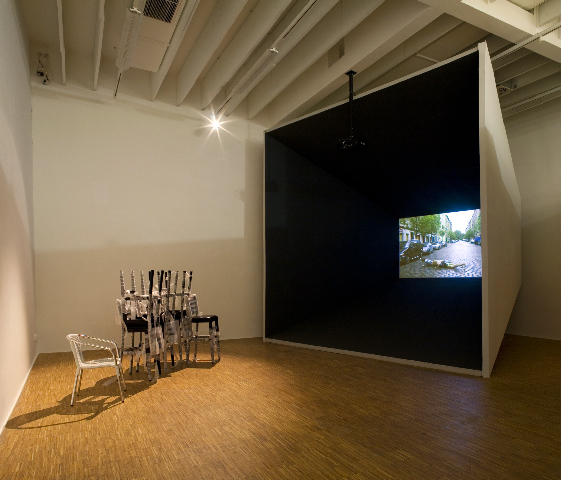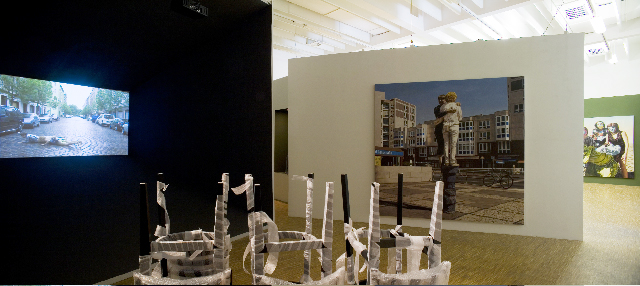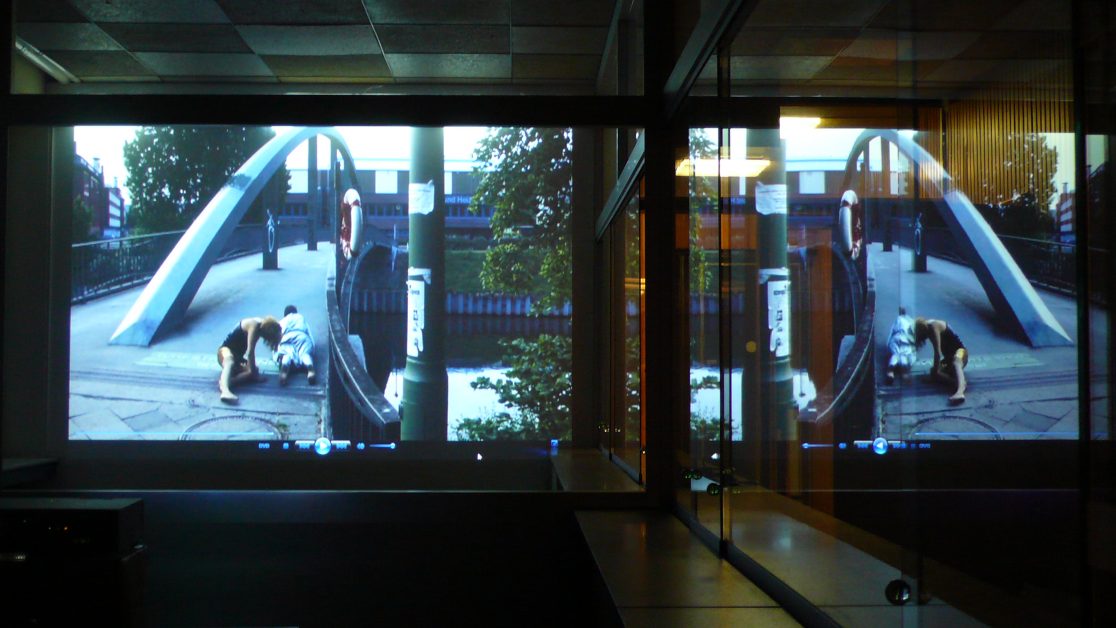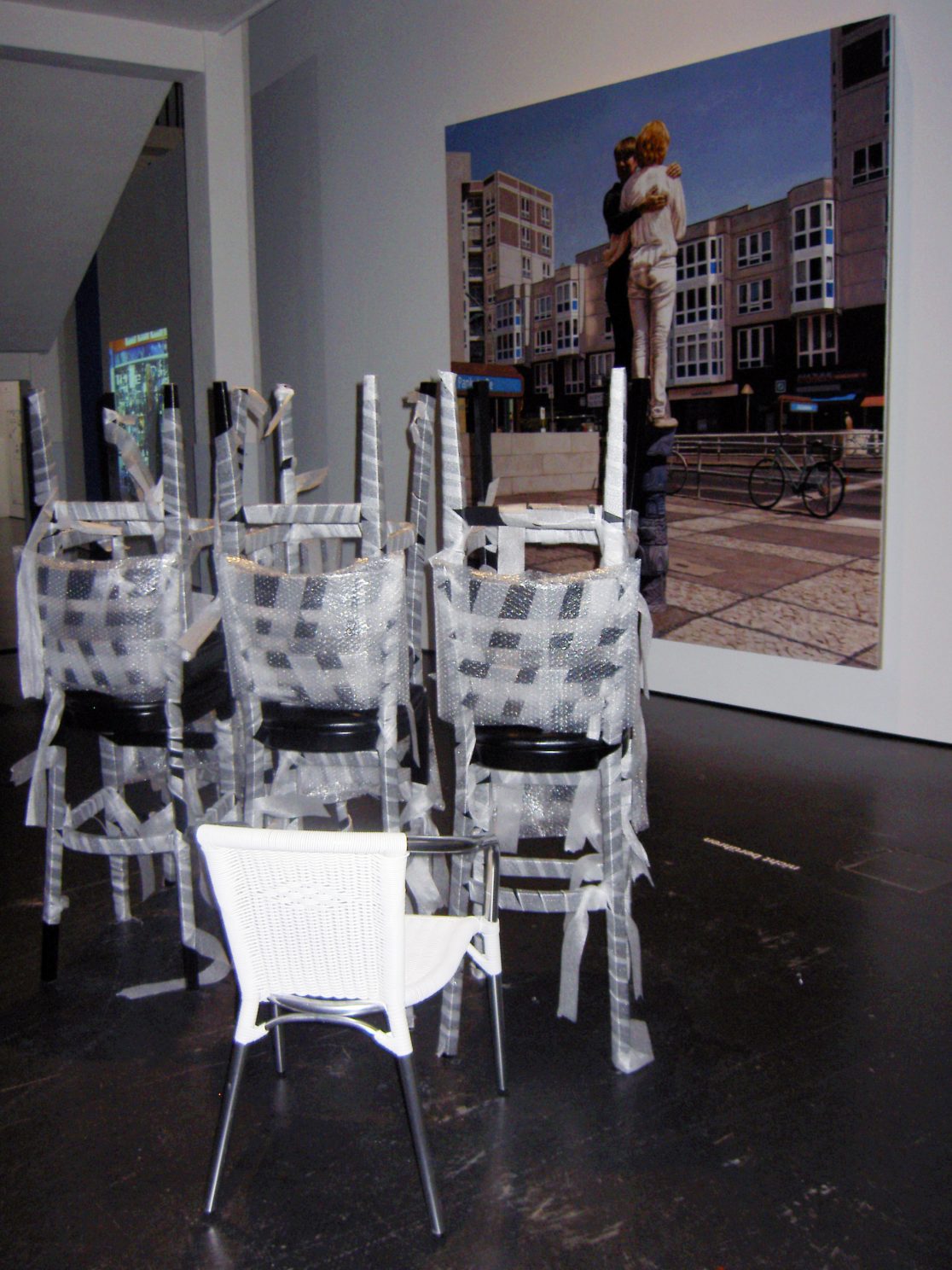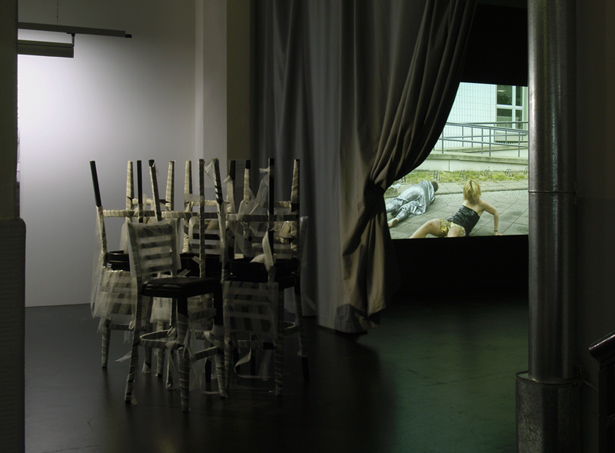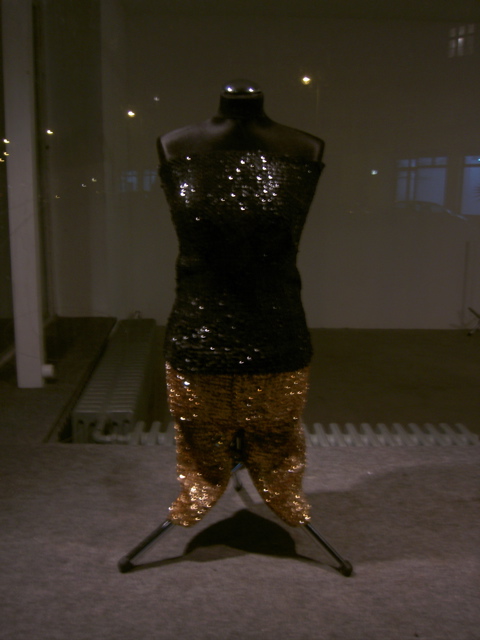Antje Majewski & Juliane Solmsdorf: Erde Asphalt Wedding, 2007
Two strange creatures come out of the canal at Westhafen, near “Wedding”, one of Berlin’s seediest districts. Their shiny costumes twinkle in the early morning light and the noise of the streets becomes louder as they continue to crawl on the ground: up to the street, over a bridge, across crossroads and past cars, until finally vanishing again behind a concrete ramp.
In Erde Asphalt Wedding (Earth Asphalt Wedding), we appropriate the governed city space by moving through it, in extreme close up, with the entire surface of our bodies.
In Säule Wedding (Column Wedding) we install ourselves into this space, becoming a sculptured column for the inhabitants of the city. While our movements in the film are unusually horizontal, in the painting we stand vertical and completely still. In both cases, the city becomes less the audience and more like a stage.
Germany is that which we both can measure with our own bodies. We measure the height of the buildings behind us in the painting, in the film it is the width of the road. Renaissance central perspective helped depict the citizen as a member of the Antique polis, standing on the stage of the city space; from the Vitruvian ideal body-to-architecture ratios (which differentiated between male and female columns) to the Le Corbusiers ”Modulor”, the human being, for which the male body was considered standard, was transformed into a set of measurement rules for architecture. Postmodern writers have long regarded Renaissance perspective as one of the roots of the modern wish to unify, the hubris by which man makes himself the measure of things. But on the other side of the same coin, there are paintings like those of Piero della Francesca, which show men and women, the queen and her servants all in the same scale, dignity and importance, all inhabiting the same space instead of the differentiated, symbolic spaces of mediaeval times. On this “objective” stage, the plays of democracy or equality can begin. The unification of space might therefore also mean that differences can be played out, that they have the right to be seen and co-inhabit the same territory.

VALIE EXPORT, Zustützung (Lean Up) (1979)
A 1976 photo series by Valie Export shows her performing curves, lines and corners in the city. For me they are ambiguous photos: she could also have been the model after which the city was built, in which case the houses and streets would huddle against her, not the other way round.
Juliane and I present ourselves as free (female) citizens, to whom the city belongs for whatever we wish to do with it – which might not be the same as what everybody else wants to do with it. For the residents of Wedding, we are recognizeable as “art” in the sense of sculptures in the city space: while moving we wear shiny, metallic outfits; when we freeze into statues, we stand on a pedestal.
The bar stools stand out on the sidewalk, ready to be picked up and taken to a place where you’ll have to pay money to sit on them. But in this very moment they serve no purpose, have a nice shape; beautiful white foam strips from the packaging are blowing in the wind. May I use them, as long as they are still standing in public space?
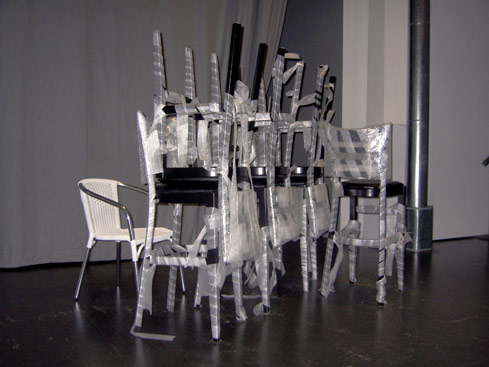
The government uses taxpayers’ money to build streets, subways, traffic lights, shoreline reinforcements. I may use all of this, it’s mine, even if I don’t pay taxes myself – in Germany we live in a community based on mutual solidarity. It also belongs to all the others around me, which is why I am not allowed to damage it, not even paint on it. Someone else might have different taste. But the government makes decisions about taste for social housing architecture, about standard traffic light design, without discussing this in public.
Our art uses the existing city space in an unusual way, as I did before with the standardized architecture of a Chinese apartment in No school today. As a relatively free democracy, Germany gives us the possibility to do these things without anyone shooting us away.
Many have brought up the question of ”who owns the cities” in recent years. With our work, we want to reclaim space for the non-economic, non-didactic freedom of the useless. We female artists are one standard of measure, one among many. The ugly man Modulor died long ago, but all municipal planning still has to rely on unifying instruments. By contrast, we present ourselves as singularities. We are not heroes, standing above than the others: we are only there for five minutes, for fun. Anyone else could do the same.
(Antje Majewski & Juliane Solmsdorf, Erde Asphalt Wedding / Säule Wedding / Nichtstun (2007-08) at ZKM, Karlsruhe, in the show “Vertrautes Terrain – Aktuelle Kunst in & über Deutschland”)
Antje Majewski & Juliane Solmsdorf
Erde Asphalt Wedding
Hdv, 8 min, 2007
Creatures: Antje Majewski, Juliane Solmsdorf
Idea: Antje Majewski
Camera: Patricia Lewandowska, Nana Rebhan
Costume design: Juliane Solmsdorf, Antje Majewski
Assistance Antjes Costume: Martine Maffetti
Editing : Antje Majewski, Juliane Solmsdorf
Editing and sound mixing assistance: Marian Otto, Elmar Vestner
Antje Majewski
Säule Wedding, 2007-08
Painting: Antje Majewski
Figures: Antje Majewski and Juliane Solmsdorf
Photographic Assistance: Elmar Vestner
Juliane Solmsdorf
Nichtstun, 2007-08
Chair, aluminium, plastic, 7 bar stools,
wood, varnish, synthetic leather,
foam foil, bubble wrap
Exhibitions:
Familienalbum, Städtische Galerie, Nordhorn, 2012
My very gestures, Salzburger Kunstverein, Salzburg, AT, 2008
Vertrautes Terrain, ZKM, Karlsruhe, 2008
Erde Asphalt Wedding, Institut im Glaspavillon der Volksbühne am Rosa-Luxemburg-Platz, Berlin, 2007
Catalogue:
Hemma Schmutz, Caroline Schneider (Ed.), Antje Majewski: My Very Gestures, Salzburger Kunstverein und Sternberg Press, Salzburg, Berlin, New York, 2008

